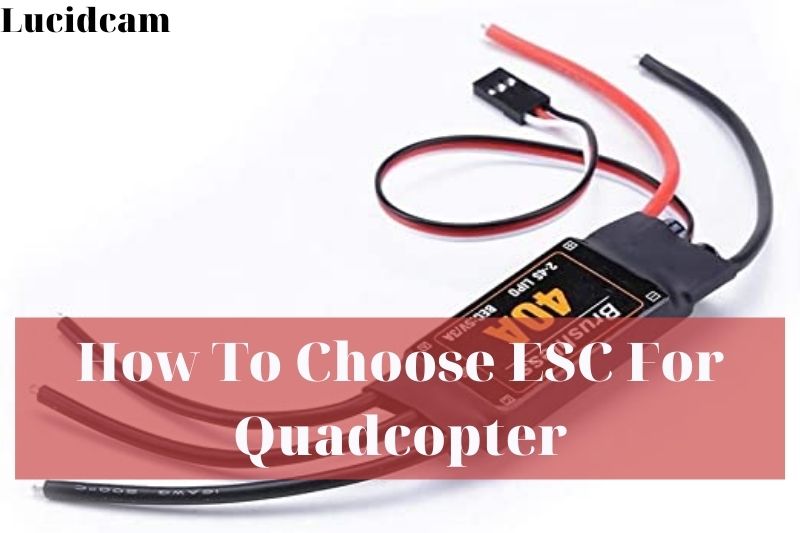The ESC functions similarly to the vehicle’s gearbox. The gearbox of the vehicle directs the wheel to revolve at the selected speed. Similarly, the speed of the brushless motor in the drone system is determined by the ESC. In this post, we will discuss the fundamental notion of an ESC, How To Choose Esc For Quadcopter, and the parameters to consider when selecting one for your drone.
Table of Contents
- 1 What is an ESC?
- 2 Why are ESCs important?
- 3 Factors To Consider When Choosing ESC For Quadcopter?
- 3.1 Current Rating
- 3.2 Input Voltage Rating
- 3.3 Voltage Spikes
- 3.4 Weight and size
- 3.5 ESC Firmware
- 3.6 Thrust and Current Overstated In Thrust Tests
- 3.7 BEC with or without BEC ( (Opto ESC’s)
- 3.8 Motor connection to ESC
- 3.9 ESC Protocols
- 3.10 ESC Processors
- 3.11 Battery Limitations
- 3.12 Hardware and Active Braking Support
- 4 ESC Anatomy
- 5 How Do I Connect ESC?
- 6 How Do You Choose The Best Quadcopter ESC?
- 7 FAQs
- 8 Conclusion
What is an ESC?
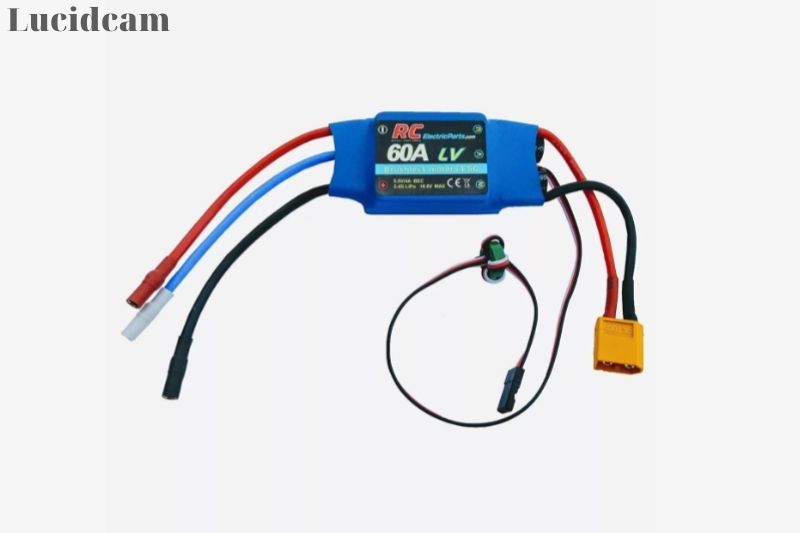
ESC stands for Electronic Speed Controller. It receives the throttle signals from a flight controller and runs the brushless motor at the desired speed.
The Electronic Speed Controller functions in the same way as a car’s transmission. The ESC tells the wheels how fast they have to turn and controls the speed at the motor spin to apply the throttle. This throttle signal is sent by the flight controller to the ESC spinning motor.
It works in the same manner as a car’s gearbox. It tells the wheels how fast they must turn, and the ESC controls the speed at which the motor must spin to apply the throttle. The flight controller sends this throttle signal to the Electronic Speed Controller spinning motor.
A good quality ESC provides a smooth and reliable flight experience. The following are some of the factors to consider when selecting an ESC.
- Current Rating
- Rating of input voltage
- Weight and size
- ESC Firmware
- BEC
- Connection to ESC
- ESC processors
- ESC Protocols
Why are ESCs important?
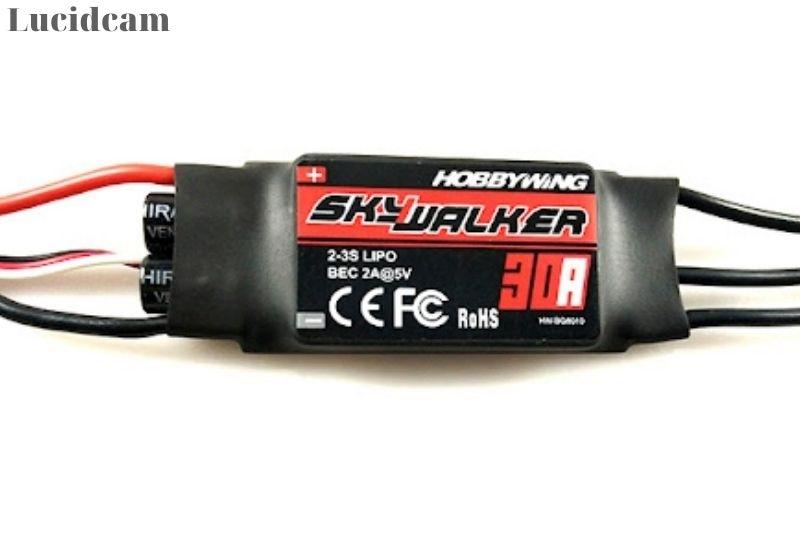
Quadcopters are unstable because they have four motors. It can be very chaotic because each motor provides thrust. Helicopters, on the other hand, only one set of blades provide thrust. They are also much more stable (the tail rotor simply counters the torque generated by the main rotor).
The flight controller is equipped with a sensitive gyro that detects the craft’s location and makes tiny connections every second to ensure the motors spin at the right speed to maintain stability.
The ESCs act as a middleman between the flight controllers and the motors. They send signals to the ESCs, which then signal the motors to adjust their speed.
The flight controller cannot communicate directly with motors without ESCs.
The ESCs send current to the motor through three wires. The amount of current they send determines the motor’s speed.
Factors To Consider When Choosing ESC For Quadcopter?

Current Rating
When choosing an ESC, the first thing you should consider is its current rating. The motors draw current as they spin. If the current rating or ampere rating is higher than your ESCs capacity, it can overheat and eventually cause damage. After selecting the right size motor for you, determine the current rating of your ESCs.
- Current draw of your ESCs
- Motors with high KV ratings
- Larger propellers (length & pitch)
- Motor size larger (stator width and height)
There are two current ratings for ESC: continuous and burst. The continuous current rating indicates the maximum continuous current which Electronic Speed Controller can handle safely. Burst rating refers to the maximum current that Electronic speed control can safely handle for a brief period (e.g., The burst rating is the maximum current that ESC can handle for a short time (e.g., 10 seconds) without damaging ESC.
Input Voltage Rating
An ESC’s voltage rating is the safest voltage it can handle. Some of the ESCs support 3S-4S battery voltage, while others can support 6S battery voltage. Here, make sure that they are compatible with the LiPo voltage. Powering your Electronic Speed Controller with excessively high voltage will damage your ESC as well as the motor.
Voltage Spikes
Weight and size
Normally the size and weight of an ESC are proportional to the Amp rating.
The ESC’s current rating determines the ESC’s weight and size. It is difficult to create ESC’s that are lighter and smaller without sacrificing their performance and effectiveness in cooling.
Mostly, single standalone ESC’s are designed with a weight around 4 grams to 6 grams, and the 4 in 1ESC weights around 12 grams to 15 grams. The heat dissipation of lighter ESC is lower, which can lead to overheating.
ESC Firmware
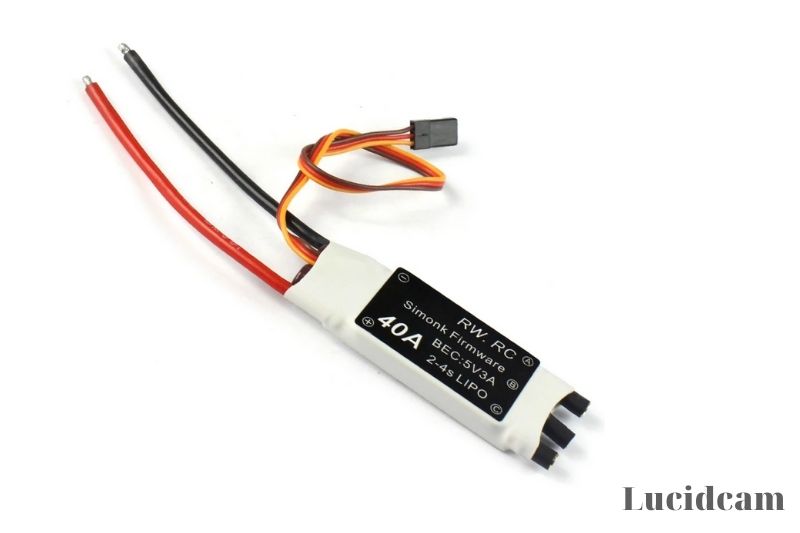
ESC firmware is the software that runs on every ESC. It controls the performance of the ESC. It provides information about the supported protocols and the configuration interface. There are many types of ESC firmware
- BLHeli ESC.
- BLHeli_S ESC
- SimonK ESC
- KISS firmware
- BLHeli_32
Simonk firmware and BLheli firmware are both open-source, while KISS firmware can only be run with KISS ESC.
SimonK and BLHeli
SimonK and BLHeli are two of the most enduring open-source ESC firmware for multi-rotors.
For better performance, early ESCs came with primitive firmware from manufacturers. Hobbyists tended then to flash 3rd-party firmware such as SimonK and BLHeli. BLHeli was later adopted by the FPV industry and is pre-installed on almost all ESCs.
BLHeli is a popular product due to its many features and easy-to-use interface. Here is a comparison of the two firmware. SimonK is no longer being maintained.
BLHeli_S
BLHeli_S firmware was the 2nd generation BLHeli firmware. It is designed specifically for ESCs with “Busybee” processors. The configurator offers a simplified user interface. Aikon 30A and DYS XS are early adopters for the new BLHeli_S firmware.
BLHeli_32
The BLHeli_32 ESC firmware, the third generation of BLHeli, is the most recent. This firmware is specifically designed for 32-bit ESCs. It has been made open source. These processors are more powerful and allow for more future development. They also provide a smoother, more reliable, and more precise performance than the previous ESC’s.
The hardware and processor determine which ESC firmware can be installed on an ESC.
There are many settings available in BLHeli_32, which can make it confusing
Thrust and Current Overstated In Thrust Tests
Static conditions are more conducive to propeller pushing air than flight. Therefore, when the motor is on the bench, it produces more thrust and draws more current. The drone will fly forward, moving through “free air,” so the amp draw is less. The FC also leaves some throttle headroom for stabilization, so you won’t see 100% of the capabilities of your motor.
My personal experience shows that the maximum amp draws in flight is typically 20%-30% lower than in static testing.
BEC with or without BEC ( (Opto ESC’s)
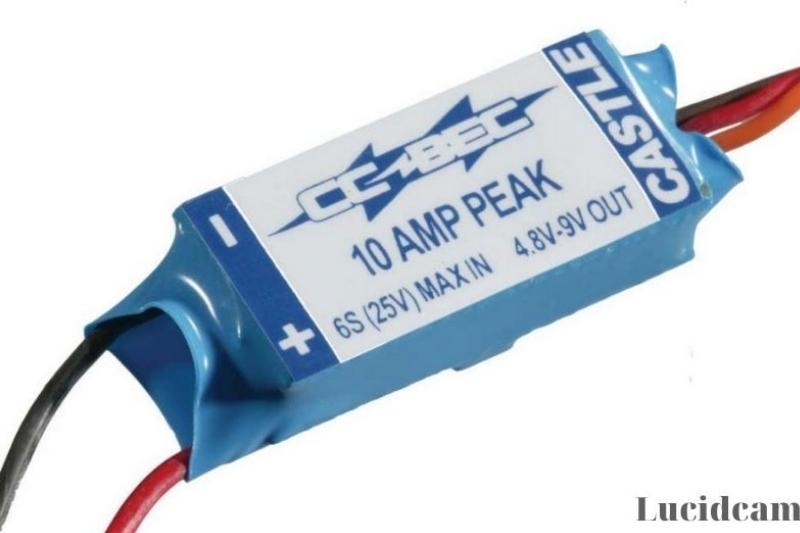
BEC is Battery Elimination Circuit. The BEC is a constant current device that provides a voltage. It provides 5V power for the flight controller, a radio receiver (RX), and other 5V components. The power distribution board is now used in quadcopters so that we don’t require ESCs with BEC.
Opto ESC is an ESC that does not include a BES. Your Flight controller and RX will need a separate power source if the 5V BEC is not available. An Optp ESC does not have the “red” servo wire, as shown in the above image. It only uses the signal and ground wire.
Motor connection to ESC
To power up, ESC uses a LiPo lithium battery. The motor’s speed is controlled by the signal received from the flight controller. The three wires in a Brushless ESC are directly connected to the motor’s three wires. Below is a single standalone ESC that includes a LIPO battery, RC receiver, and a brushless motor.
ESC Protocols
Protocols can be described as the operating system for Electronic speed control. They control how fast communication between the ESC (flight controller) and ESC (flight controller). This is a key factor in the performance and handling of a quadcopter.
This is a listing of all current protocols that are used on quadcopters from the oldest to the most recent:
- Standard PWM
- Oneshot125
- Oneshot42
- Multishot
- DShot
- ProShot
ESC Processors

The processors used by most ESC are ATMEL, Silabs, and ARM Cortex. These processors all have different features, specifications and support different firmware.
ATMEL 8-bit works with both BLHeli and SimonK firmware
SLABS 8 bit is compatible only with BLHeli_S or BLHeli_S
ARM Cortex 32 bit (e.g., STM32 F0 and F3, L4 can be run with BLHeli_3
We hope you find this article helpful in understanding the basics of ESCs. This article will help you choose the right ESC for your multirotor.
Battery Limitations
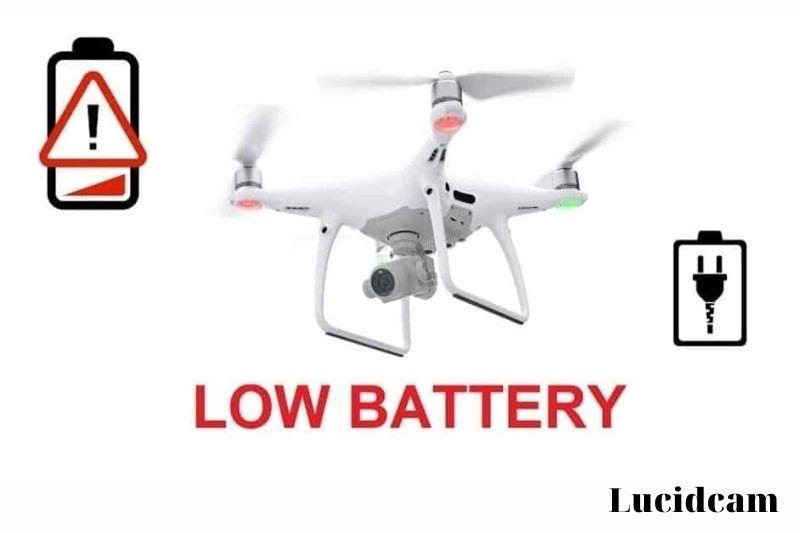
The internal resistance causes the voltage to sag when you draw current from LiPo batteries. The voltage will drop to the limit of discharge, and then it won’t be able to sustain high current draws.
For 5″ builds that use 4S 1300mAh- 1500mAh LiPo, 30A EESC are sufficient. This is because LiPo of this size can’t hold 120A for very long (a few seconds best). Most 4S 1500mAh batteries I’ve tested can’t even reach 100A maximum discharge rate.
Higher rating ESCs are recommended for larger batteries and more powerful builds.
Hardware and Active Braking Support
An ESC has a few key characteristics that allow them to perform well and are worth mentioning.
Damped Light, a.k.a. Active Braking – This greatly improves responsiveness
Hardware PWM – Increases smoothness and responsiveness. Your quad is noticeably quieter and slightly more efficient. You can also have more control.
Dedicated gate driver – While cheaper ESCs use transistors for FET gates driving, a dedicated gate driver increases active braking effectiveness.
ESC Anatomy
An ESC is made up of the following components:
- MicroController
- Gate Drivers
- MOSFET
- LDO
- Arrays of filtering capacitors
- Optional: Current Sensor
- Optional: LED
How Do I Connect ESC?
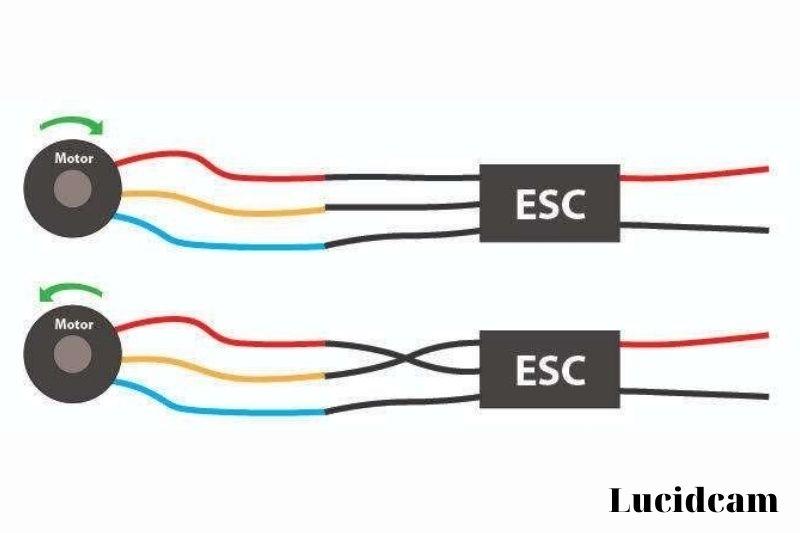
ESC is powered by a LiPo battery. Motor speed is controlled via a signal from the flight controller.
Three wires connect the motors to the ESC. It doesn’t really matter what order the wires are in. Y If the motor spins in the wrong direction, simply swap any two wires. You can also adjust the rotation direction in BLHeliSuite.
SILABS F330 & F39X
There are many processors available for SiLabs-based ESCs. For example, F330 or HTML390 / HTML396.
F330’s clock speed is lower than F39X and may not be able to run high KV motors. These problems are not present in the F39X, which also supports the Multishot ESC protocol. The DYS XM20A (F333) and the Little bee 20A (F39X) are two well-known examples.
How Do You Choose The Best Quadcopter ESC?
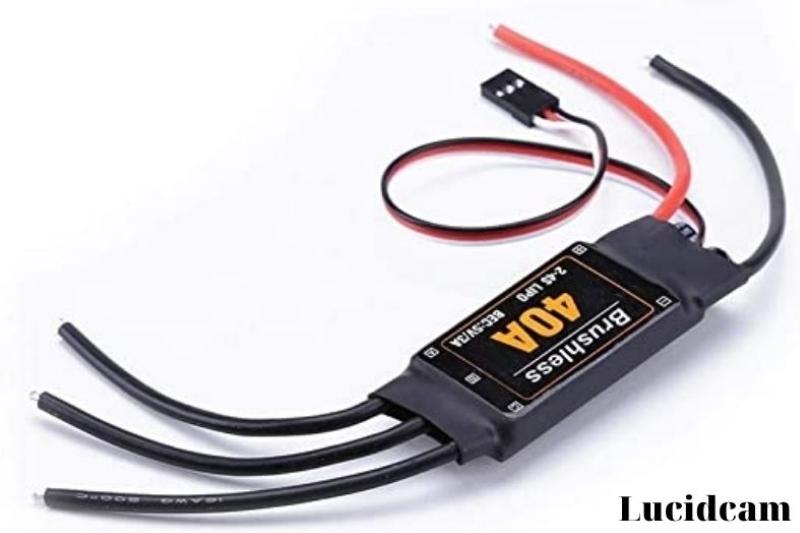
Bethel, simonk, or kiss is the most popular firmware running on multirotor ESCs. This is made possible by CleanFlight’s support for “BLHeli passing through,” which is built into all CleanFlight-based flight controllers. This allows you to program and update your multirotor ESCs directly from the computer connected to your flight controller.
If you want to switch to a more efficient switching mode than the more complicated linear mode type BEC, then you need to be sure you are purchasing the correct one. You need to learn a bit about numbers and words (types, input voltages. output voltages. ratings, etc.). To ensure you have what you need,
Brushless motors are typically 85-90% efficient or more, higher efficiencies for a brushless electric motor, of up to 96.5%, whereas DC motors with brushgear are typically 75-80% efficient. When precise speed control is required, brushless DC motors are often used. You should choose the matching ESC based on the brushless motors. This is also a brushless ESC.
FAQs
Can I use a different ESC on my quadcopter?
Can a quadcopter/multi-copter use an ESC from a different manufacturer? This is possible, but it is not recommended. Although it might work, it is not recommended. Unbalanced multi-copter can be detected by flight controllers and given a higher power signal.
Which size ESC should you use?
You can choose the Electronic speed control based on the voltage or the peak current rating. An ESC should have at least 5A more power than its peak rating. This is because you might be using the ESCs to power servos and receivers. Always round up
How can I select the best ESC?
When choosing an ESC, the current rating is the first thing you should look at. This is measured in Amps. When motors spin, they draw current. If your ESCs draws more Amps, it can overheat and eventually die. Your ESCs could even go up in flames if it experiences a catastrophic failure.
How do you match a motor ESC?
How much ESC am I going to need?
Excessive current can cause damage to an ESC. The motors that draw the most current are larger. Propellers with higher pitches and propellers with larger motors draw more current. Currently, most pilots can fly with a 30-amp ESC.
Conclusion
Programming skills (throttle range, battery modes, and so forth) are critical. Only examine ESCs that have gotten user feedback. Add all weights to the calculation if you wish to optimize the cargo capacity of your quadcopter. Please share your knowledge about selecting the best quadcopter ESC.
Lucidcam hopes this article will be helpful for you. Please share this post if you found it helpful so that others might see its contents as well!. Thank you for reading!
You can check out another piece of information, if you want: How To Choose A Drone 2023: Top Full Guide For You.
